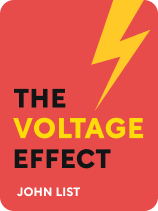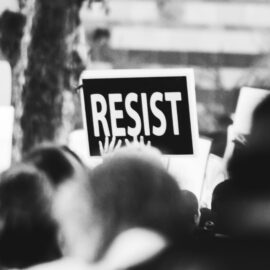

This article is an excerpt from the Shortform book guide to "The Voltage Effect" by John A. List. Shortform has the world's best summaries and analyses of books you should be reading.
Like this article? Sign up for a free trial here.
What is the spillover effect? How does it impact your ability to scale an idea?
In The Voltage Effect, economist and professor John A. List provides advice on how to figure out if a particular idea will scale. In order to do this effectively, you must understand the spillover effect, recognize it when it’s happening, and manage it well.
Read more to learn how to deal with the unintended consequences of scaling your idea.
The Spillover Effect
As you try to scale your idea, it helps if you understand the spillover effect. What is the spillover effect? List notes that, at scale, ideas often produce unintended effects, both positive and negative. Failing to account for the potential negative effects of scaling can prevent you from successfully scaling your ideas.
(Shortform notes: In addition to impacting your idea’s scalability, unintended consequences can also impact the world around you. For instance, as your company scales up manufacturing, its operations may have an increased effect on the environment and the health of the surrounding area. While these kinds of unintended consequences may not necessarily affect your bottom line, they could have severe consequences. As you monitor your organization for financial consequences, be sure to look out for non-financial consequences, too.)
List notes that unintended consequences of scale often occur because markets naturally tend to stabilize after being disrupted—because of this principle, when a new product enters the market, it may experience an inflated level of success due to its price point, its novelty, or other factors. However, as suppliers of similar products adjust their prices and offerings, and consumers adjust their spending and expectations, a new product’s initial advantages can diminish, leading the new product to gradually lose steam as the market readjusts around it. As a result, ideas that initially seem to be scaling well may wind up struggling in the long run.
(Shortform note: As businesses scale up, they often standardize their procedures across their many locations to provide customers with a consistent experience. However, if your product’s advantage is a strong brand identity, standardization can cause this identity to become diluted as an unintended consequence of scale. For example, experts note that as Starbucks scaled up, it experienced a cultural crisis. After standardizing procedures across their thousands of stores, Starbucks executives found that the stores had begun to lose their identity as cozy coffee houses. Instead, they more closely resembled fast food locations.)
For example, List notes that, during his time at Uber, the company attempted to increase driver earnings by raising fares across the board. While this initially caused drivers to earn more, over time, the increased cost led riders to book fewer trips, causing driver earnings to return to their previous level as the market readjusted.
(Shortform note: Despite Uber’s rationale for keeping both fares and pay rates low, many rideshare drivers have continued to demand raises, striking and advocating for legislation that would increase their earnings. These drivers argue that pay increases are necessary to keep up with inflation. At least in part due to these protests, in March 2023, New York City’s local government passed legislation that increased rideshare driver wages within the city by about 9%. How the market will readjust remains to be seen at the time of this writing.)
The Unintended Consequences of Workplace Social Dynamics
Unintended consequences of scale can also stem from certain workplace dynamics. As you scale your organization, you’ll inevitably have to hire more employees. With an increasingly large workforce, the relative costs of social problems such as demoralization, poor communication, and employee turnover can become increasingly severe due to the effects of scale.
Suppose, for instance, that due to its demanding environment, your startup maintains a 40% annual turnover rate. Given that you only employ 10 people, this high rate of turnover likely won’t feel unmanageable, as it only equates to hiring one new employee every few months. However, suppose that your business scales up, growing in size to the point where it employs a workforce of 1,000 people. If your business maintains its high turnover rate at scale, to remain fully staffed, it will have to go through the costly and time-consuming process of hiring dozens of employees each month. While it wasn’t such a big deal when your workforce was small, at scale, managing turnover becomes exponentially more expensive.
(Shortform note: While List argues that unwanted workplace dynamics become increasingly costly at scale, some authors believe that larger organizations are often better equipped to deal with workplace toxicity than smaller organizations. These authors argue that at scale, most organizations have the resources to staff and train HR departments that can help repair broken workplaces. By contrast, in small organizations, where each member of the team is intricately involved in the day-to-day, negative workplace dynamics may be allowed to fester while other issues take precedence.)

———End of Preview———
Like what you just read? Read the rest of the world's best book summary and analysis of John A. List's "The Voltage Effect" at Shortform.
Here's what you'll find in our full The Voltage Effect summary:
- How to take ideas from the small scale to the big stage
- The red flags that signal you may have trouble scaling up
- Strategies designed to increase your idea’s chances of success






